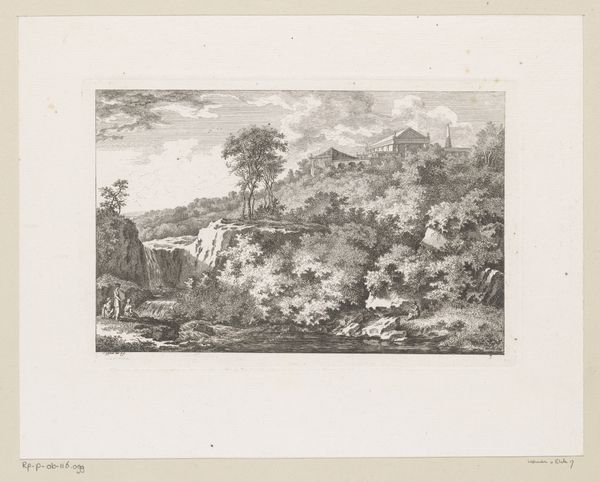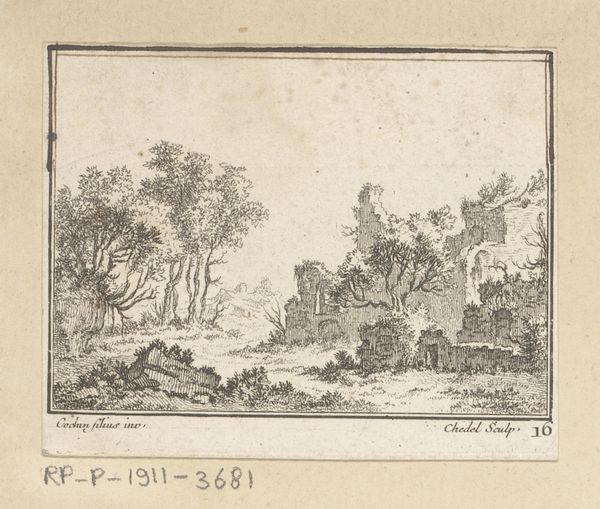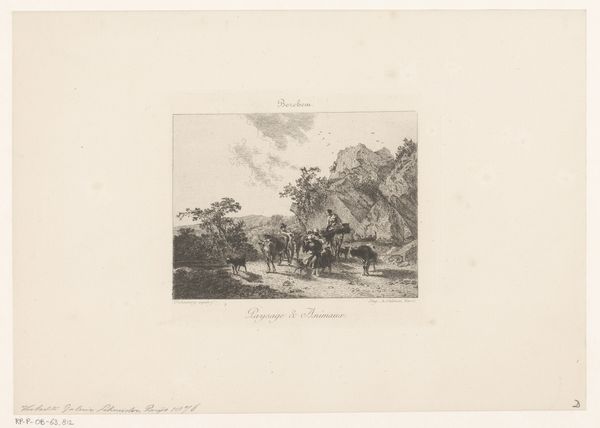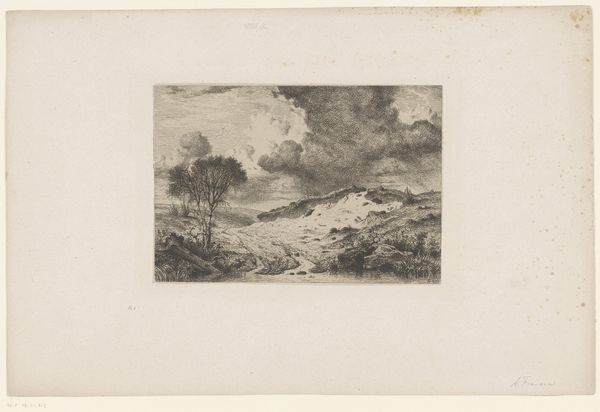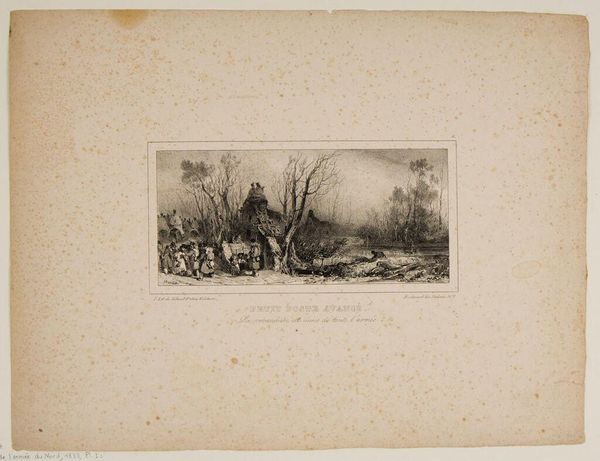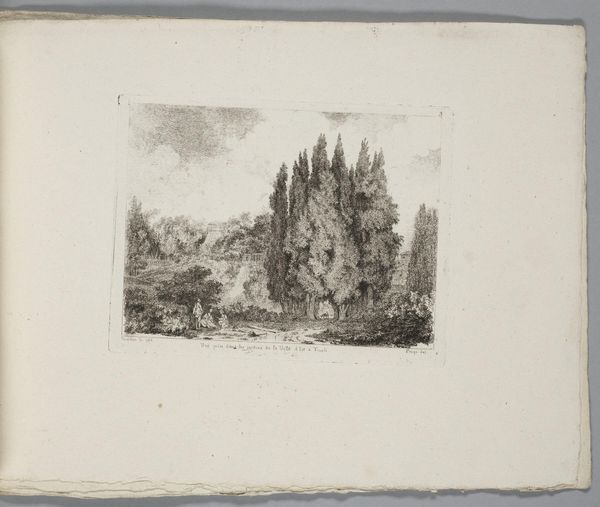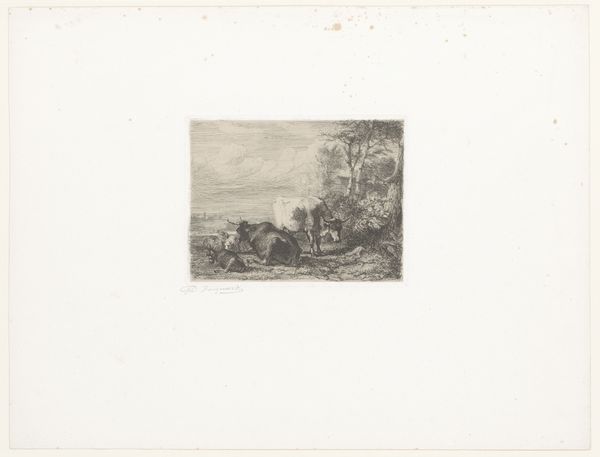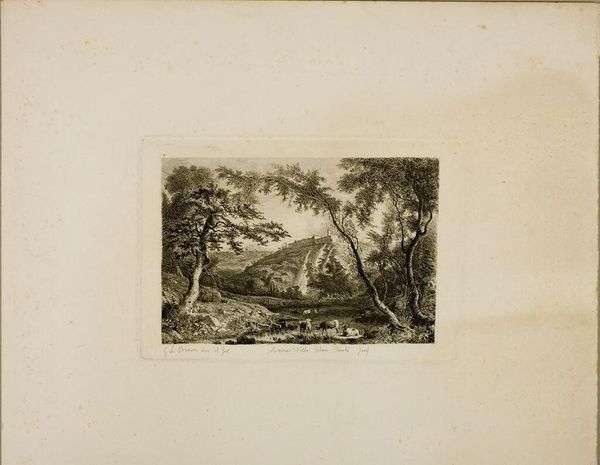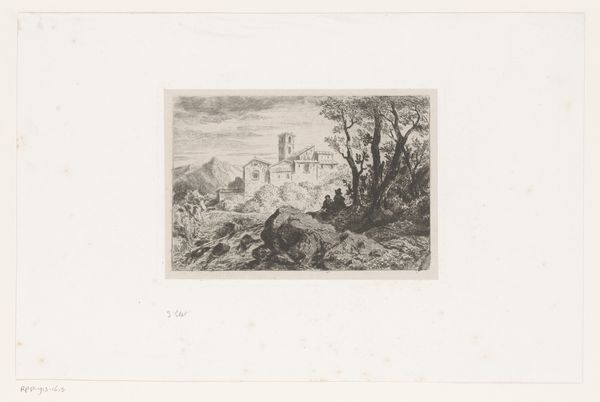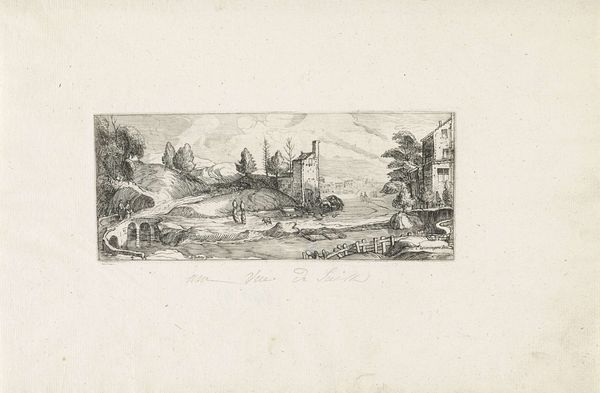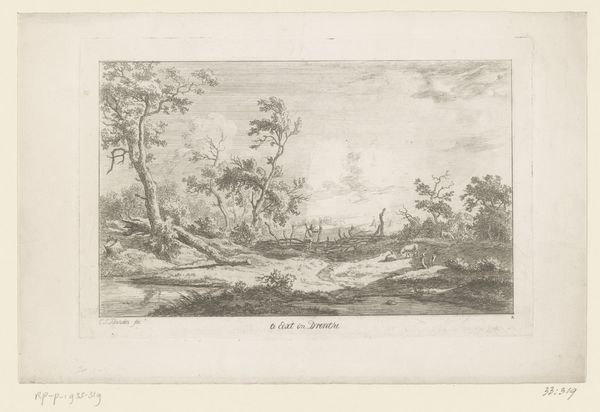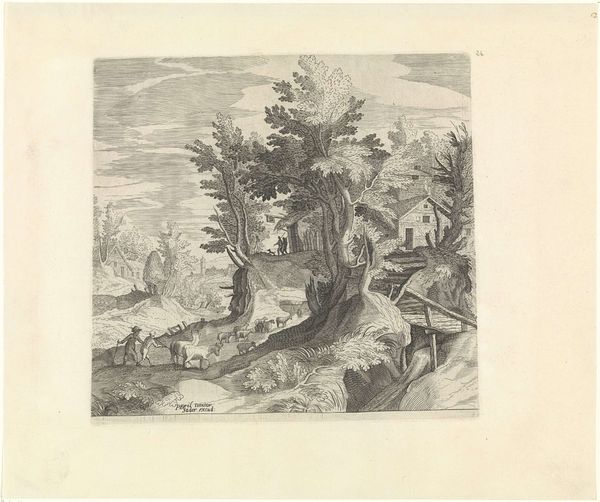
drawing, print, etching
#
drawing
# print
#
etching
#
landscape
Dimensions: height 138 mm, width 167 mm
Copyright: Rijks Museum: Open Domain
Curator: Jan Dik created this etching, titled "Landschap met hooimijt en figuren," or "Landscape with haystack and figures," sometime between 1897 and 1911. It's a scene rendered in meticulous detail, depicting a humble, rural landscape. Editor: My immediate impression is one of melancholic beauty. The limited tonal range amplifies the image's raw, almost austere mood. The figures appear isolated and rather small within the vastness of the countryside. Curator: It's compelling how Dik situates these figures in relation to the landscape; you can almost see an allegory of their existence and perhaps even class being dwarfed by larger structural systems. It’s relevant, don't you think, considering the artist’s political engagements? Editor: I do. And I'm particularly drawn to how Dik renders the haystack—its very form echoing the shape of nearby cottages—suggests a profound, almost primal relationship between people, dwelling, and environment. Notice how that form also alludes to concepts of shelter. It’s the universal desire to find protection. Curator: Exactly, and the landscape serves not only as setting, but almost as a character; notice how this specific period marked great agrarian distress amidst rapid industrialization and social reforms; artists of his time, deeply worried about societal and economical upheaval, created a renewed focus on labor within those scenes. Editor: You're right to contextualize it within its specific historical period. Now that you mention the figures are laborers, it heightens a sense of yearning; this pastoral life seems tinged with the hardships of an existence defined by their bond to this landscape. Curator: The seemingly modest aesthetic belies an assertive message, doesn't it? The piece is rendered not simply to show a pastoral fantasy, but rather is deeply rooted to portray realities, speaking directly to issues around land, labor, and social identity. Editor: Considering its humble execution, there is still immense value and impact as it echoes our search for continuity—we build our symbolic understanding on images such as these that reverberate throughout our collective past. Curator: Well, considering all this, I now view it less as a scene, but instead, a portrait of time; It speaks volumes about the temporality and interconnectedness of existence and labor. Editor: Indeed. A timeless exploration of humanity’s role within the great unfolding narrative of our ecosystem.
Comments
No comments
Be the first to comment and join the conversation on the ultimate creative platform.

